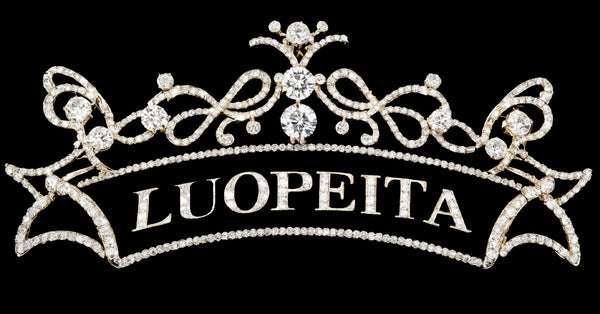Understanding Common Fabrics Used in Clothing
Share
Understanding fabric types is crucial for creating and selecting clothing that fits your needs. From natural fibers to modern synthetics, each fabric brings unique properties, making it suitable for specific applications. Here’s a comprehensive guide to 20 common clothing fabrics, their characteristics, and where they are typically used.
1. Cotton
- Characteristics: Soft, breathable, and highly absorbent. Hypoallergenic and versatile.
- Common Uses: T-shirts, underwear, dresses, and casual wear.
2. Wool
- Characteristics: Warm, insulating, and moisture-wicking. Naturally odor-resistant.
- Common Uses: Sweaters, suits, coats, and winter accessories like scarves and hats.
3. Silk
- Characteristics: Luxuriously smooth, lightweight, and shiny with excellent draping properties.
- Common Uses: Evening gowns, lingerie, ties, and scarves.
4. Linen
- Characteristics: Durable, lightweight, and highly breathable. Has a natural cooling effect.
- Common Uses: Summer shirts, pants, dresses, and home textiles like tablecloths.
5. Polyester
- Characteristics: Durable, wrinkle-resistant, and quick-drying. Retains shape well.
- Common Uses: Activewear, outerwear, casual clothing, and home furnishings.
6. Rayon (Viscose)
- Characteristics: Soft, breathable, and drapes beautifully. Mimics the feel of silk or cotton.
- Common Uses: Dresses, blouses, flowy garments, and linings.
7. Nylon
- Characteristics: Strong, stretchy, and lightweight. Resistant to abrasion and quick-drying.
- Common Uses: Activewear, swimwear, hosiery, and outerwear.
8. Acrylic
- Characteristics: Warm, lightweight, and resembles wool. Retains shape and color well.
- Common Uses: Sweaters, blankets, and winter accessories.
9. Spandex (Lycra)
- Characteristics: Extremely stretchy, durable, and lightweight. Offers excellent mobility.
- Common Uses: Activewear, leggings, swimwear, and compression garments.
10. Denim
- Characteristics: Sturdy, durable, and slightly stretchy. Recognized by its diagonal weave pattern.
- Common Uses: Jeans, jackets, overalls, and casual wear.
11. Velvet
- Characteristics: Soft, plush, and luxurious with a rich texture.
- Common Uses: Evening wear, dresses, blazers, and upholstery.
12. Chiffon
- Characteristics: Sheer, lightweight, and flowy. Often made from silk, polyester, or nylon.
- Common Uses: Evening gowns, blouses, scarves, and wedding dresses.
13. Satin
- Characteristics: Shiny on one side and matte on the other. Smooth and elegant.
- Common Uses: Formalwear, lingerie, ties, and bedding.
14. Jersey
- Characteristics: Stretchy, soft, and comfortable. Can be made from cotton, wool, or synthetic blends.
- Common Uses: T-shirts, dresses, sportswear, and loungewear.
15. Fleece
- Characteristics: Soft, warm, and lightweight. Highly insulating and quick-drying.
- Common Uses: Jackets, blankets, and activewear.
16. Organza
- Characteristics: Sheer, lightweight, and stiff with a crisp texture.
- Common Uses: Wedding dresses, evening gowns, and decorative elements.
17. Leather
- Characteristics: Durable, flexible, and strong. Offers a classic and stylish appearance.
- Common Uses: Jackets, shoes, belts, and bags.
18. Cupro
- Characteristics: Silky, breathable, and biodegradable. Made from cotton linter.
- Common Uses: Luxury garments like dresses, blouses, and scarves.
19. Canvas
- Characteristics: Sturdy, durable, and thick. Often made from cotton or linen.
- Common Uses: Bags, shoes, outdoor clothing, and workwear.
20. Tweed
- Characteristics: Warm, textured, and durable. Typically made from wool.
- Common Uses: Jackets, coats, suits, and skirts.
How to Choose the Right Fabric
- Seasonality: Lightweight fabrics like cotton, linen, and chiffon are ideal for summer, while wool, fleece, and velvet are best for winter.
- Functionality: For activewear, choose stretchy materials like spandex or jersey. For formalwear, silk, satin, or velvet add elegance.
- Durability: Denim, leather, and tweed are perfect for long-lasting garments.
- Aesthetics: Fabrics like chiffon, organza, and jacquard enhance visual appeal for special occasions.
Conclusion
From the elegance of silk to the durability of denim, the variety of fabrics available allows for endless possibilities in clothing design. Each material has distinct characteristics that make it suitable for different applications. By understanding these fabric types, you can make informed decisions for both style and practicality, ensuring your wardrobe or product line meets every need with finesse.
Luopeita, the Original Clothing Factory with a Professional Design Team.
Contact Us
Email: sales@luopeitarx.com
WhatsApp: +86 18126777722
Phone: (+86) 18126777722
Working Time:(CST), UTC +8 6a.m to 10p.m.
Headquarters Address:
Room 408, No. 63 Jinou Avenue, Nancun Town, Panyu District, Guangzhou City, Guangdong Province, China.
